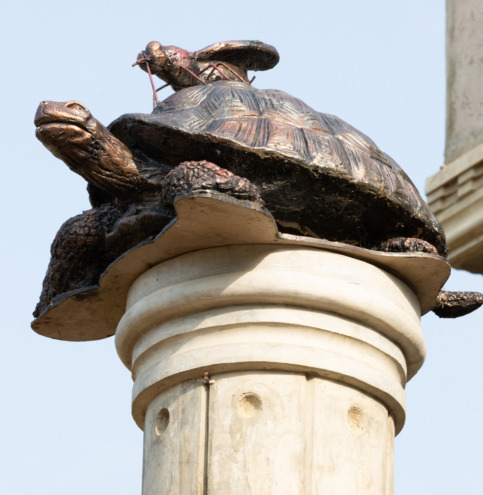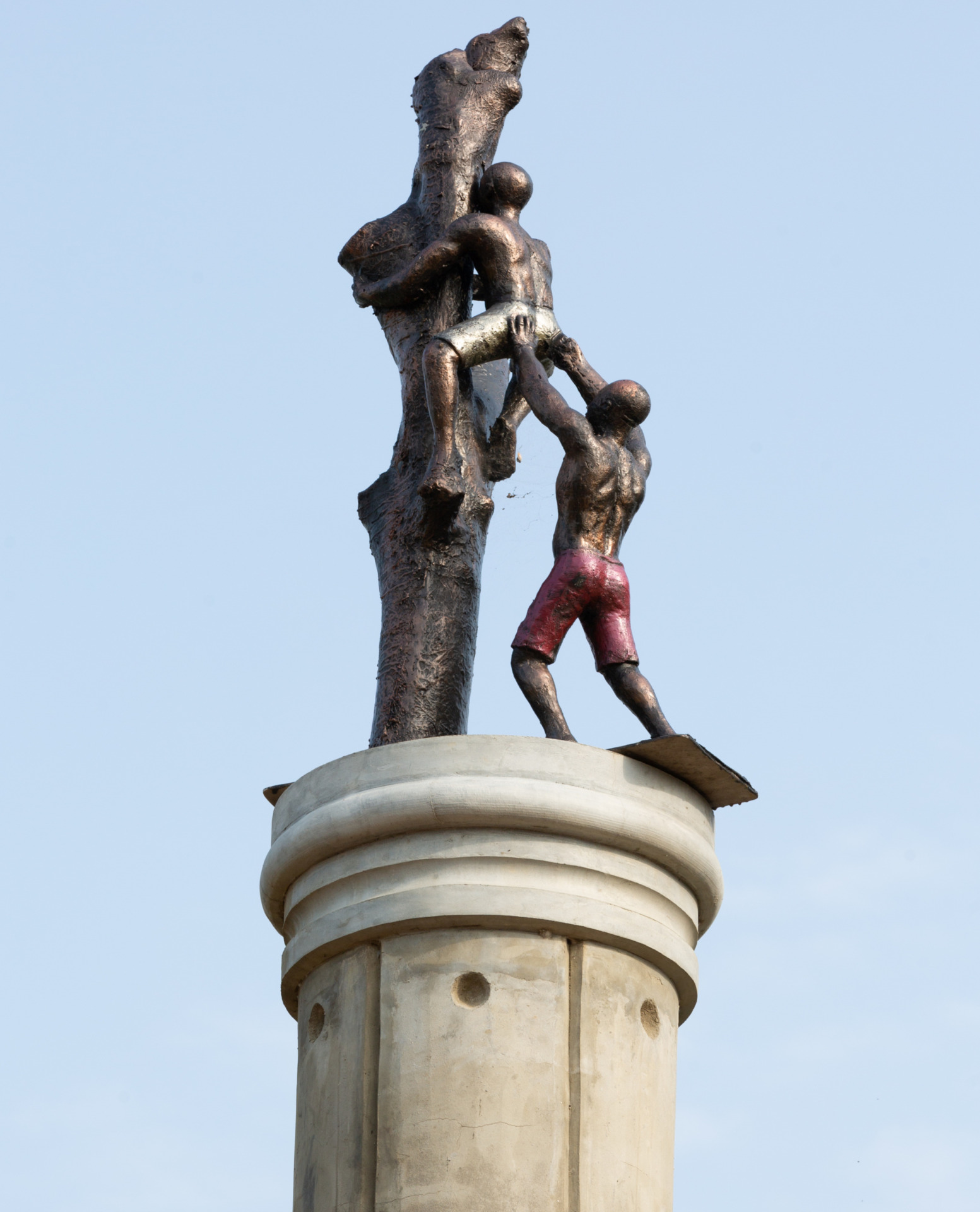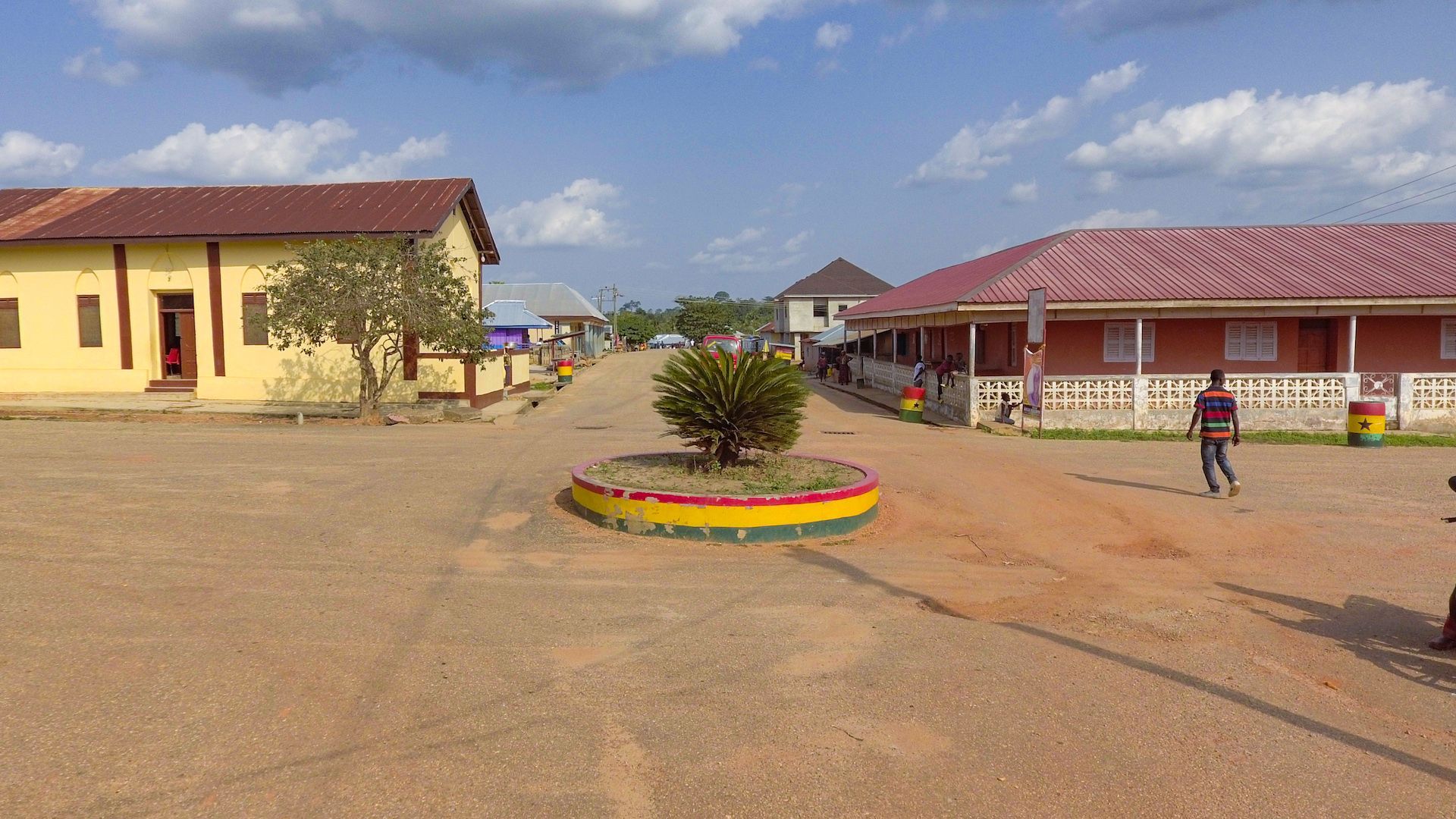Our History


Owirenkyi eee!!!!!! Owirenkyi!
Owirenkyi! Wo awen akyi firi tete
Woda Pra ano, Wodware sikansuo
Wohy kwaemu wotu sika
Wodua sika wotwa sika
Wode Adwumadn apagya wo man
Ama wo man nya mpontuo
Kantamanto! Katakye!
Wako kopa ama w’adi nkunim
K wanim, k wanim
Owirenkyi eeee!!!!! Owirenkyi!
Owirenkyi! Wo awn akyi firi tete
Hail Owirenkyi!!!!! Hail Owirenkyi!
Owirenkyi! You’re the ancient invincible warrior
You’re on the banks of River Pra, You bath gold water
You live inside the forest and mine gold
You plant gold and harvest gold
By your hard work, you have uplifted your nation,
And this has brought inclusive progress to your nation The one who stands by his word, the indisputable hero
You have fought the good fight and emerged victorious Advance, advance
Thou Owirenkyi!!!!! Thou Owirenkyi!
Owirenkyi! You’re the ancient indomitable warrior

The people of Asen Owirenkyi (Assin Owirenkyi) were warriors of aboriginal Etsii stock
The Asen Owirenkyi was one of the scattered Etsii groups that evacuated from the coast to the forest zones of the Pra basin for ages before the Akan groups including the Mfantse, Asen, Twifo, Denkyira, and Adanse emerged from the northern hinterlands to occupy the area and the lands on the
coast. Apart from the Owirenkyi, the other Etsii groups include Asen Andoe, Asen Gyirakaa (Gyakai/Jakai), Asen Gyawasiwa, Asen Bosomadwe, Asen Wurakse, Asen-Akenkansu, Asen Dwaaso (Juaso), Asen Edwenase, Amanfopong (Yanwa), Asuantse, Nsendzi, Ebusu, Saaben, Duasin, Sonkwa, Otsir, Adowegyir, Abonwenmu, Akrampa, Opepeadze, Kurwa, Edumafar, Abrem-Agona, Kuruwa, Mframandwe, Gyinankoma, Gomoa Akraman, Gomua Abor, Gomua Adaa, Gomua-Antseadze (Nana Obse’s group), Esiam, Ekumfi-Ekuroful, Atakwaa, Fawomanya, Tetsi, and. Twifo-Heman, Ayinabir (Hemanso), and Ati-Mokwaa, Anomabo, Gomoa-Akoti, Egyaa, Obonoma (Anomabo), Mmowur (Moree), Dwokwaa (Jukwa), and others. These Etsii were in pre-colonial Ghana before other aboriginals such as Asebu and the Ahanta groups led by Asebu Amanfi, Etsikwadu, Badu Bonsoe, and others arrived. Because of this autochthonous status of the Owirenkyi, that is why the chief’s drum sounds, Firi tete, Owirenkyi firi tete; Owirenkyi ee! awen akye firi tete “From time immemorial, Owirenkyi is of ancient origins; Thou Owirenkyi! You have been invincible since the primordial times.”
It was the place where the Etsii Abordze (Aduana) warriors met to strategise on the battles they fought on their way to their present location. The name Asen Kuhyia (Assin Kushea) became the name of the Etsii Abordze and Akan Aduana group until 2007 when the traditional area was upgraded into a paramountcy of Asen Owirenkyi Traditional Area with Kushea as its traditional capital.
Another version of the Owirenkyi oral tradition contends that before the people move to settle at Kuhyia (Kushea), they settled first at Bohumase (vulgarisation of the old
name Nkohumase, meaning “you should know my origins”), which is about twenty-six miles from Cape Coast. The place offered the Owirenkyi opportunity to hide their stool from the Denkyira and Asante when they invaded the Asen territories at different times. This made it impossible for their stool to be captured by the two powerful kingdoms. The two states of Owirenkyi and Bohumase allied to protect themselves and fight against any external aggressor. This pact led to a strong relationship where the people of Owirenkyi and Bohumase could ascend the stool or political offices in either town. This went on for a very long time until the stool was later brought back to Kuhyia (Kushea) in the early nineteenth century.
At the Old Kuhyia (Kurowdadawmu), Owirenkyi played an important role in the coastal trade and the relationship that later came to exist between the inland state and the Europeans. The Owirenkyi was identified by the Europeans on the coast as part of the Little Akani (Asen-Adanse coalition) despite their historic and cultural identification as Etsii. This misidentification flows from their proximity to the Asen and Adanse from the seventeenth century when a sort of political unity occurred between the Owirenkyi and Asen-Adanse coalition, and the later Asen state with their capitals then at Ansa and Aboabo (Apagya)-Nimiaso north of the Pra River.
The Owirenkyi chiefs who were ancient warriors were elected as the commanders of the Asen (Akani) army. Hence, both Pra Agyensam Mmofo or
Agyensam Nimfa (General Nimpha / Imufa) and kumanin Oduro Pra Agyensaim, ca. 1695-1730, led the Asen at various times to wage wars of subjugation against the Etsii on the lower banks of the Pra River from the late seventeenth century to the early eighteenth century. The military influence and commercial acumen of the Owirenkyi brought prestige to their independent state. kumanin Oduro Pra Agyensam, did not only make Owirenkyi an important state, but he became a wealthy merchant controlling and directing the inland trade with the south.
Oduro Agyensam was the one who fought to protect the Asen state against the Denkyira in its early rise and was able to defeat Denkyira army under Akotia just as his predecessor, Agyensam Mmofo had also defeated Denkyira army under Agya (Kra) Ananse in 1696.
After the war, dfo B Amponsem died suddenly. The Denkyira who were envious of the prosperity of the independent state of Owirenkyi because of their coastal trade and connections to the Europeans came up with the trump-up charges about the complicity of Oduro Pra Agyensam’s involvement in the death of B Ampnsem. Acting upon the rumours flying about the circumstances of the great King’s death, Ntim Gyakari who succeeded B Amponsem accused the Oduro Pra Agyensem of poisoning his uncle and predecessor. Oral sources aver that when Oduro Agyensam sent the Asen’s annual tribute of European rum to the King, he laced it with poison, because when the puncheon which contained the rum was opened a bat flew out of it, signalling ominous intent.
